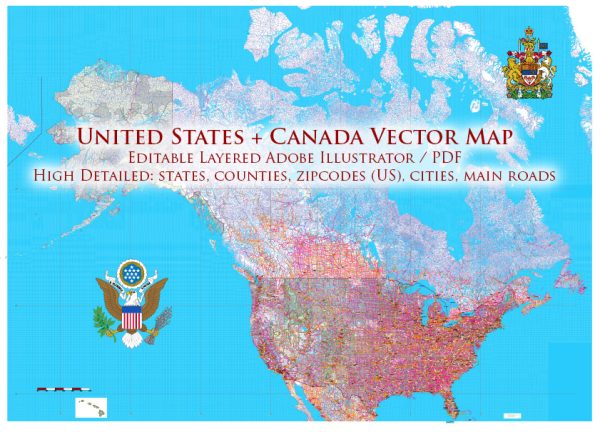The energy systems in the United States and Canada are complex and diverse, reflecting the vast size and varied energy resources in both countries. Here’s an overview of the energy systems in the United States and Canada:
United States:
- Fossil Fuels: The United States has historically relied heavily on fossil fuels, including coal, natural gas, and oil, for its energy needs. While coal usage has been declining due to environmental concerns, natural gas and oil continue to play significant roles in electricity generation, transportation, and industry.
- Renewable Energy: The U.S. has been experiencing significant growth in renewable energy sources, such as wind, solar, and hydropower. Wind and solar capacity has expanded rapidly, and hydropower remains a longstanding source of clean energy, particularly in the western states.
- Nuclear Energy: Nuclear power is a source of low-carbon electricity in the U.S. There are numerous nuclear power plants across the country, but the sector faces challenges related to aging infrastructure and public perception.
- Energy Efficiency: Energy efficiency programs and initiatives are widespread in the U.S., aimed at reducing energy consumption and greenhouse gas emissions. These efforts span from individual households to large industries.
- Grid Infrastructure: The United States has a vast and interconnected electrical grid that spans the entire country, allowing for the transmission of electricity over long distances.
Canada:
- Hydroelectric Power: Canada is a global leader in hydropower generation, with numerous large hydroelectric dams and facilities. This abundant and renewable energy source provides a significant portion of Canada’s electricity.
- Fossil Fuels: Canada is also a major producer of fossil fuels, particularly oil and natural gas. Alberta, in particular, is known for its oil sands production. These resources are vital to the Canadian economy and energy supply.
- Nuclear Energy: Canada has a number of nuclear power plants that contribute to the electricity grid. Nuclear energy is considered a low-carbon source of power.
- Renewable Energy: Like the U.S., Canada has been investing in renewable energy sources, including wind and solar power. These sources are growing in importance, particularly in provinces with strong renewable energy policies.
- Energy Efficiency: Energy efficiency programs are implemented across Canada, aimed at reducing energy consumption, greenhouse gas emissions, and increasing energy savings.
- Grid Infrastructure: Canada has a vast and diverse electrical grid, with connections between provinces. It allows for the transmission of electricity over long distances, helping to balance supply and demand.
- Indigenous Involvement: Indigenous communities in Canada are increasingly becoming involved in energy projects, including renewable energy and natural resource development, through partnerships and agreements.
Both the United States and Canada are actively working to transition to cleaner and more sustainable energy sources to reduce greenhouse gas emissions, combat climate change, and ensure a reliable energy supply for the future. Energy policies and initiatives vary between provinces and states, reflecting regional differences in energy resources and priorities.


 Author: Kirill Shrayber, Ph.D.
Author: Kirill Shrayber, Ph.D.